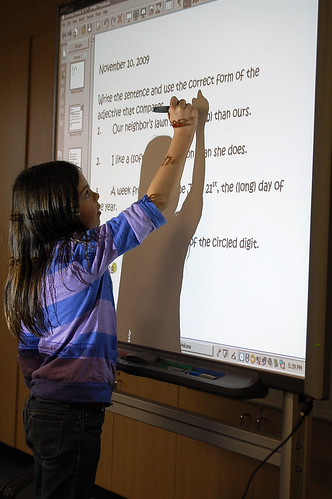Focus Question: What are "digital inequality" and the "participation gap"?
Digital inequality is the used to explain how students' lack of access how the use of technology is connected to their socioeconomics in today’s society.
Participation gap means that the low income families have not had the same advantage of the use of new technologies for learning compared to the upper class.
Henry Jenkins a professor at Massachusetts Institute of Technology, advanced is knowledge into the idea of the participation gap and noticed the differences between the students that had technology access 24/7 compared to the ones that did not. He believes that without steady access several students fall behind compared to their online peers in skills. Also, that the students that come from a low income families have less of an opportunity to experiences navigating the
internet and having online conversations.

I think that just by adding computers, iPad's, and other technologies that are useful for the students and teachers would be very useful for the less fortunate students. It would help them become skilled in the technology world and would not make them behind in skills.
Tech Tool link: Edutopia
Edutopia is a wonderful website to use as a search engine for the teaching of K-12 schools. You can simply type in a keyword and find vast information on the topic, but it does have to do with education. It also futures a collections of technology integrated resources and it is very easy to navigate. Although it does have advertisement it is very few that you would not be distracted by it.
Technology integration and educational change is what is discussed in chapter 4. Technology can be integrated by teachers in classrooms simply by using computers, tablets and digital pens to get the students to interactive. Educational change potential for technology in schools are based upon the imagination and needs of the students and teachers. Technology strategies and integration are discussed to help teachers address the problem with digital divide, digital inequality and participation gap. Some on the strategies mentioned to help with participation gap were to provide all the students with technology useable for learning, also to use computers as a stations for students to do academic activities and to have students work in small group activities giving them the opportunity to work on academic assignments.
I really enjoyed reading this chapter, I learned that low income students have a greater possibility to lack the skills of technology compared to the wealthier ones. Also I strongly agree with the thought of all classrooms having small group activities, a computer station and a one on one area so that the teacher can work with each student individually in order to help the less fortunate with receiving their skills.
Great photo enhancement and super link to Edutopia! I like the way you related it to your own feelings about and experience with technology. :)
ReplyDelete